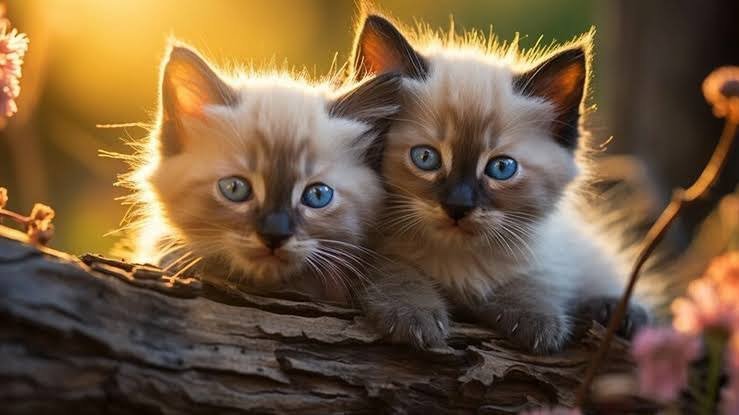
Crossbreeding exotic zoo cats has been a topic of fascination for wildlife enthusiasts, geneticists, and zoo visitors alike. These hybrid felines, born from the union of two different species, often display remarkable traits inherited from both parents. If you’re curious about how crossbreeds of zoo cats come to be, what unique characteristics they might have, and why zoos consider this an important part of conservation and education, you’ve come to the right place!
In this post, we’ll dive deep into the crossbreeding of two zoo cats—exploring everything from why zoos do it to some famous examples. By the end, you’ll have a good understanding of this practice and the controversies and benefits surrounding it.
What Does “Crossbreed of Two Zoo Cats” Mean?
A crossbreed of two zoo cats refers to a hybrid born when two different feline species are bred together. These can be wild cat species such as lions, tigers, leopards, or jaguars that normally wouldn’t mate in the wild but are bred in controlled environments like zoos. The aim of such crossbreeding varies but is often linked to genetic diversity, conservation, and scientific research.
Why Do Zoos Crossbreed Cats?
There are a few reasons why zoos might intentionally crossbreed cats:
- Conservation Efforts: Breeding crossbred cats can help keep populations of endangered species healthy by diversifying their gene pool.
- Educational Purposes: Hybrids help zoo visitors understand the complexities of genetics and species behavior.
- Research: Studying hybrids gives scientists valuable insights into animal genetics, physiology, and adaptation.
- Public Interest: Exotic hybrids can attract visitors due to their unique appearance and rare existence.
However, it’s important to note that crossbreeding is controversial. Some argue that hybrids don’t serve a real conservation purpose, as they are not naturally occurring species and can face health problems. Others, however, view it as a fascinating way to study and preserve genetics.
Famous Crossbreeds of Zoo Cats
When discussing crossbreed of two zoo cats, several iconic hybrids come to mind. Let’s take a look at some of the most well-known examples of feline hybrids in zoos.
1. Liger (Lion + Tiger)
Perhaps the most famous crossbreed, the liger is born from the mating of a male lion and a female tiger. Ligers are often larger than both parent species, with a unique blend of features such as the lion’s mane and the tiger’s stripes. Despite their impressive size and striking appearance, ligers often face health challenges, such as growth-related issues due to the genetic combination.
2. Tigon (Tiger + Lioness)
A tigon is the reverse of a liger—this hybrid results from a male tiger mating with a lioness. Tigons are typically smaller than ligers and exhibit traits from both parents, such as faint tiger stripes and a slightly developed mane like a lion. Unlike ligers, tigons are less likely to grow excessively large but may still face health challenges due to their hybrid nature.
3. Leopon (Leopard + Lioness)
The leopon is another fascinating crossbreed. It comes from breeding a male leopard with a lioness. Leopons have the muscular body of a lioness and the spotted coat of a leopard. They are usually smaller than lions but larger than leopards, making them a visual marvel in zoos.
4. Jaguar-Leopard Hybrid
Though rare, jaguars and leopards have been crossbred in captivity. The resulting offspring often retain the dark rosettes of both species but have more muscular builds similar to jaguars. These hybrids are prized for their powerful appearance but, like other hybrids, face potential genetic health issues.
The Controversy Around Hybrid Cats in Zoos
While the concept of crossbreeding cats sounds exciting, it’s not without debate. Critics argue that breeding hybrid cats can harm conservation efforts by diverting attention from saving purebred endangered species. Additionally, hybrids may suffer from genetic issues, such as being sterile (meaning they can’t reproduce) or having shorter lifespans due to inherited health problems.
Another point of contention is that these hybrids don’t exist in the wild, so they lack a natural habitat and role in the ecosystem. Opponents feel that efforts should focus more on preserving natural wildlife instead of creating new species.
On the other hand, advocates see crossbreeds as a learning opportunity. They argue that hybrids can serve as ambassadors for conservation and help bring attention to endangered species.
Benefits and Challenges of Crossbreeding Zoo Cats
Benefits
- Educational Value: Hybrid cats can spark public interest in learning about wildlife conservation and genetics.
- Research: Hybrids allow scientists to explore the limits of animal genetics and understand how different species interact on a biological level.
- Conservation Awareness: Even though hybrids aren’t naturally occurring species, their existence can bring attention to the plight of their parent species.
Challenges
- Health Issues: Hybrids often face genetic complications, such as sterility or health problems caused by conflicting genes.
- Ethical Concerns: Critics question the morality of creating animals that wouldn’t naturally exist.
- Lack of Conservation Impact: Many feel that breeding hybrids doesn’t contribute to the survival of endangered species and that resources could be better used for other conservation efforts.
Conclusion: Are Crossbreeds the Future of Zoo Cats?
The crossbreed of two zoo cats is a fascinating topic that continues to spark debate. While some argue that these hybrids can offer insights into animal genetics and raise awareness for endangered species, others question their ethical and conservation value. Regardless, hybrids like ligers and tigons capture the public’s imagination and offer a unique window into the world of exotic cats. Whether you see them as scientific marvels or ethical quandaries, one thing’s for sure—they are here to stay in zoos around the world.
FAQs
1. Can hybrid zoo cats reproduce?
Most hybrids, like ligers and tigons, are sterile, meaning they cannot reproduce. This sterility is common in many crossbreeds.
2. Do hybrid cats exist in the wild?
No, hybrid cats like ligers and tigons do not occur naturally in the wild because lions and tigers live in different regions and do not mate with each other in nature.
3. Are hybrid cats dangerous?
Like their parent species, hybrid cats can be dangerous due to their size and strength. However, they are typically raised in controlled environments in zoos.
4. Why do zoos breed hybrid cats?
Zoos may breed hybrids for research, educational purposes, or to diversify the gene pool, though this practice is somewhat controversial.
5. Are crossbred zoo cats endangered?
Hybrids themselves are not endangered since they do not occur in the wild, but their parent species, like lions and tigers, are often endangered.
6. What is the largest hybrid zoo cat?
The liger is the largest hybrid cat and can grow larger than both of its parent species, lions and tigers.







